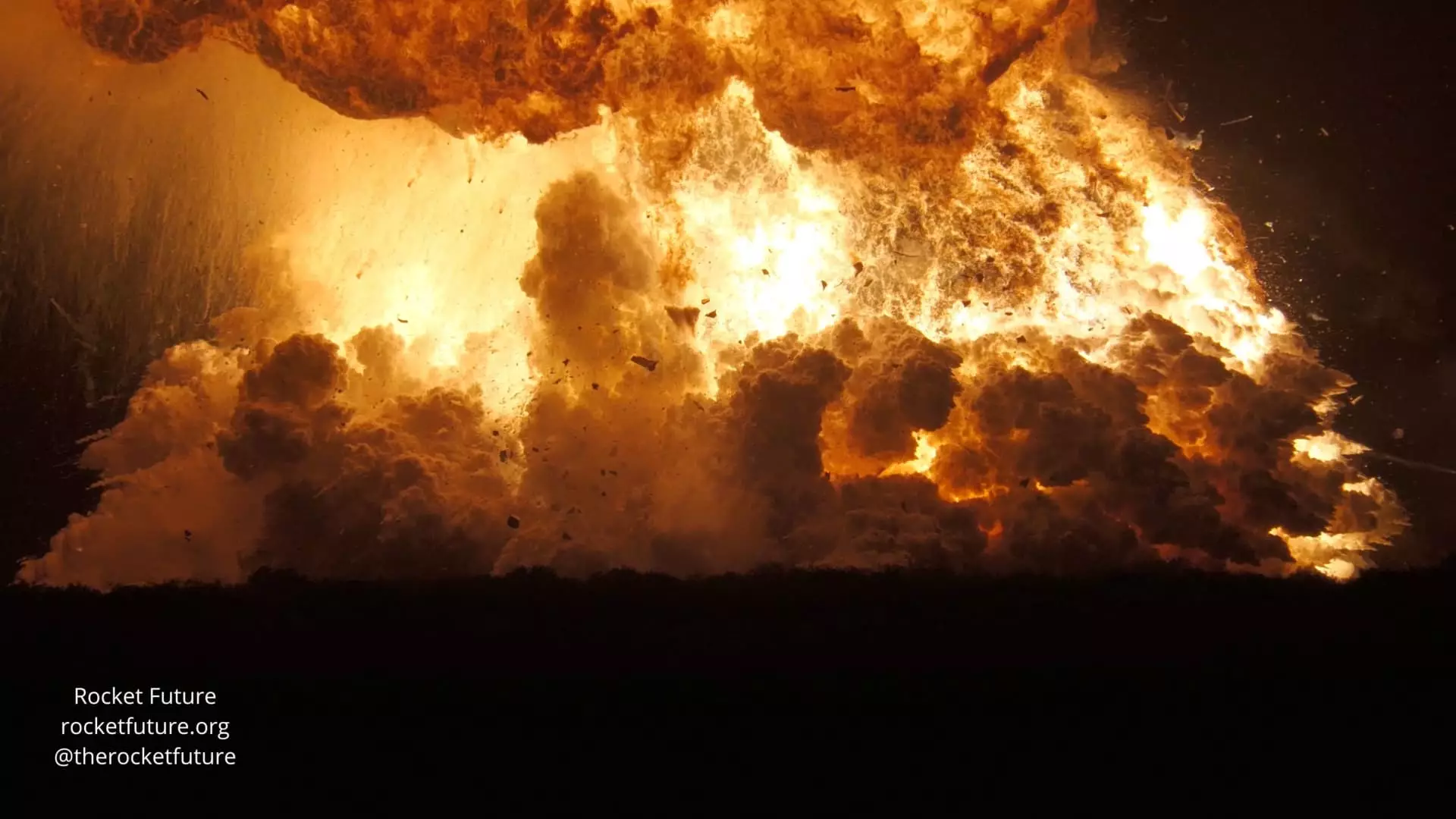The recent catastrophic failure of SpaceX’s Starship during routine testing has ignited serious concerns about the future of crewed missions. Onlookers witnessed a rocket erupting in flames at the Starbase facility in Texas, and while no injuries were reported, the revelation highlights a disturbing trend. With yet another explosive incident to add to the tumultuous history of this flagship project, the optimism surrounding Elon Musk’s ambitions is increasingly met with skepticism. Space exploration is already a risk-laden undertaking, and these repeated failures could signal a fundamental problem with the approach to developing heavy-lift vehicles.
Overestimating Reliability: A Reckless Gamble
Despite its impressive dimensions—standing 120 meters tall—the operational reliability of Starship is deeply questionable. The latest explosion, which follows multiple other unsuccessful launch attempts, suggests that SpaceX may be overestimating its capabilities while underestimating the complexities involved in sending humans to orbit and beyond. While Musk displays a tenacious optimism about colonizing the Moon and Mars, there exists a sobering reality that technological limitations pose a significant barrier. Continuous iterations of a flawed vehicle are unlikely to yield success without a more measured, strategic approach to development and testing.
The Ignored Regulatory Landscape
The commercial space race is glitzy and filled with promises of groundbreaking achievements, yet it is crucial not to overlook the regulatory landscape that governs safety in aerospace. The casual dismissal of hazards could put lives at risk as well as jeopardize the fragile ecological balances around launch sites. In a bid to initiate rapid innovation and capture public imagination, there’s a disquieting disregard for the accountability that comes with such immense responsibility. Would a more scrupulous compliance with safety regulations have prevented Starship’s embarrassing blow-up? That’s a question worth pondering as excitement morphs into anxiety among the general populace.
NASA’s Reluctance: A Cautionary Tale
As Musk positions Starship as a cornerstone of NASA’s Artemis program aimed at lunar exploration, hesitation from the governmental side may be construed as a bellwether for the risks involved. There’s a palpable tension between private ambition and federal responsibility when it comes to space missions. For an organization such as NASA, which must adhere to stringent safety protocols, the idea of hitching its future to a vehicle that has exhibited such volatility could seem reckless. The pressure to achieve ambitious timelines may lead to a leaky safety net, leaving crewed missions on a knife’s edge.
Long-Term Implications for Commercial Space Ventures
The prospects of commercial orbiting labs and opportunities for private space ventures could be clouded by the turbulence surrounding SpaceX’s efforts. As firms like SpaceX seek to diversify their offerings—such as launching the forthcoming Starlab private space station—stakeholders must consider the reliability of the technology that underpins these operations. It raises questions: How many such catastrophic failures can the industry withstand before investors and partners retreat into the shadows of caution? The odds are heavily stacked against a laissez-faire approach when human lives are at stake.
Starship may be intended to herald a new era of space exploration, yet, without accountability, transparency, and a solemn commitment to safety, it threatens to become a cautionary tale rather than a beacon of hope.

